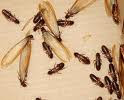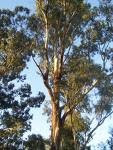:::::::::::::::::::::::::::::::::::::::::::::::::::::::::::::::::::::::::::::::::::::::::::::::::::::
Beggar, begging
***** Location: Kenya, Japan
***** Season: Topic
***** Category: Humanity
*****************************
Explanation
Begging means asking people for money, food, shelter or other things, when one is not able to give anything instead. It is also referred to as sponging, spanging (short for "spare-changing") or (in American English) panhandling.
In larger cities, it is common to see beggars who ask for money, food, or other items. Typically, beggars often beg for spare change equipped with coffee cups, mugs, small boxes, hats, or other items into which monies can be placed and sometimes display signs with messages such as "Help me. I'm homeless."
© More in the WIKIPEDIA !
Bettler, Heimatloser
:::::::::::::::::::::::::::::::::::::::::::::::::::::::::::::::::::::::::::::::::::::::::::::::::::::
chokoraa, chokora - "street boy" or "parking boy"
and "street children"
"street mothers"
These are the people (most often boys) living in the street, making an income from begging, collecting and selling rubbish for recycling, keeping an eye on parked cars, and also sniffing glue, eating whatever they can find, and stealing here and there. The government has a policy of bringing the street children into schools or training institutions, and they have become far fewer in the city centre of Nairobi in recent years. They do quite well if they are brought to a home and provided with education; their problem is that usually their parents cannot cope and abandon them to their own devices.
Isabelle Prondzynski
. . . CLICK here for Photos !
a chokoraa waves
his candidate's portrait--
Hamza terminus
Andrew Otinga
September 2010
:::::::::::::::::::::::::::::::::::::::::::::::::::::::::::::::::::::::::::::::::::::::::::::::::::::
"Kenya has become a country of ten millionaires
and ten million beggars."
- Kenyan politican J.M. Kariuki, assassinated in 1975
source : www.kenya-advisor.com
*****************************
Worldwide use
Canada
August 25 is the annual Day of the Homeless in Toronto.
It's promoted by The Good Neighbours’ Club.
World Homeless Day is on the 10/10 each year.
Day of the Homeless
a memorial service
for John Doe
Chen-ou Liu
Canada
Reference : World Homeless Day
:::::::::::::::::::::::::::::::::::::::::::::::::::::::::::::::::::::::::::::::::::::::::::::::::::::
India
cold January night -
I think beggars are the only ones
without a caste
bitterly cold night -
I toss coins one by one
towards a beggar
duly ironed
dhobi casts the moon
again in the sky
with the bowl--
beggar collecting
spring happiness
Manu Kant
JOJ, 2012
quote
The Dhobi are a caste group found in Pakistan, India who specialize in washing clothes. The word Dhobi is derived from Hindi word dhona, which means to wash. They are found throughout North India, Gujarat, Maharashtra as well as the Punjab province of Pakistan, where they are known as Gazar. The Dhobi is likely to be of diverse origin, with those who ancestors took the occupation of washing clothes evolving over time into a distinct caste, bound by rules of endogamy. Most Dhobis follow the customs and traditions of the region they live, so for example those in North India speak Hindi, while those in Maharashtra speak Marathi.
© More in the WIKIPEDIA !
:::::::::::::::::::::::::::::::::::::::::::::::::::::::::::::::::::::::::::::::::::::::::::::::::::::
Japan
monogoi 物ごい / 物乞い beggar, begging
binboonin 貧乏人 Bimbo, "a poor person"
gokutsubushi 穀つぶし, 穀潰し, ごくつぶし a person without a job or income
hoomuresu ホームレス homeless
. Poor Monk (dooshinboo 道心坊) .
konjiki, kojiki, kotsujiki 乞食 beggar, Bettelmönch
kojiki 乞食 beggar (an old word used by Issa)
tsuji no kojiki 辻の乞食 crossroads beggar

薦を着て誰人います花の春
. komo o kite tarebito imasu hana no haru .
who is this man wearing a straw mat ?
. Matsuo Basho 松尾芭蕉 - Archives of the WKD .
. Kobayashi Issa 小林一茶 and his Beggar Haiku .
:::::::::::::::::::::::::::::::::::::::::::::::::::::::::::::::::::::::::::::::::::::::::::::::::::::
虱とる乞食の妻や梅がもと
shirami toru kojiki no tsuma ya ume ga moto
the beggar's wife
picks off the lice -
under the plum blossoms
Tr. Gabi Greve
月天心貧しき町を通りけり
tsuki tenshin mazushiki machi o toorikeri
the full moon
overhead, i pass through
a poor town
Tr. Robin D. Gill
. moon and Yosa Buson 与謝蕪村 in Edo .

by Yamaguchi Hitomi 山口瞳
tsukitenshin, a kigo for autumn.
:::::::::::::::::::::::::::::::::::::::::::::::::::::::::::::::::::::::::::::::::::::::::::::::::::::
runpen ルンペン "Lumpen", tramp, loafer, bum, hobo

ルンペンに今宵のベンチありやなし
runpen ni koyoi no benchi ari ya nashi
for the tramp
a bench tonight -
maybe yes, maybe not
ルンペンのうたげの空に星一つ
runpen no utage no sora ni hoshi hitotsu
at the banquet
of the tramps high in the sky
just one star
. ルンペン晩餐図
Shinohara Hosaku 篠原鳳作
:::::::::::::::::::::::::::::::::::::::::::::::::::::::::::::::::::::::::::::::::::::::::::::::::::::
boro ぼろ tattered cloths, rags
boro ichi ぼろ市 flea market
Any piece of an old robe could be re-used like patchwork to make another robe, then a piece of wiping cloth and finally back to earth to become manure. In the Edo period, not one thread was wasted.
うしろからぼろを笑ふよ梅の花
ushiro kara boro o warau yo ume no hana
behind me
laughter at my rags...
plum blossoms
Kobayashi Issa
Tr. David Lanoue
. . . . .
boro utte sake koote samishiku mo aru ka
If I sell my rags
And buy some sake
Will there still be loneliness?
. 山頭火 Santoka and Sake
:::::::::::::::::::::::::::::::::::::::::::::::::::::::::::::::::::::::::::::::::::::::::::::::::::::
Mongolia
Beggars in Mongolia
- Reference -
spring
while everything awakens
a beggar sleeps soundly
Sodkhuu Altanchuluun
. MONGOLIA SAIJIKI .
:::::::::::::::::::::::::::::::::::::::::::::::::::::::::::::::::::::::::::::::::::::::::::::::::::::::

Homeless
Down at city bus-link
Waiting, destination nowhere !
- Shared by Mokhtar Sah Malik -
Haiku Culture Magazine, 2014
*****************************
Things found on the way
. Deity to bring poverty 貧乏神 binboogami, bimbogami
with Haiku by Kobayashi Issa - bimbô kami

Priest Daito as beggar
Kojiki Daitoozoo
乞食大燈像(こじきだいとうぞう)
白隠慧鶴筆 Painting by Hakuin
source : Tokyo National Museum
:::::::::::::::::::::::::::::::::::::::::::::::::::::::::::::::::::::::::::::::::::::::::::::::::::::
. Shotoku Taishi and Daruma as a beggar
聖徳太子とだるま
*****************************
HAIKU
なめくじよお主いつからホームレス
namekuji yo onushi itsu kara hoomuresu
dear slug !
since when are you
homeless?
Maeda Tomio 前田吐実男
source : rekishitanbou.com
:::::::::::::::::::::::::::::::::::::::::::::::::::::::::::::::::::::::::::::::::::::::::::::::::::::
sudden rain--
the dwarf beggar limps
to the pavement
Caleb Mutua
:::::::::::::::::::::::::::::::::::::::::::::::::::::::::::::::::::::::::::::::::::::::::::::::::::::
Patrick Wafula
even beggars
line up mangoes for sale--
Haile Selassie Avenue
source : Nairobi Haiku
ndizi for lunch --
a ragged beggar
asks me for a coin
source : Arusha Travel
ndizi is Swahili for banana
:::::::::::::::::::::::::::::::::::::::::::::::::::::::::::::::::::::::::::::::::::::::::::::::::::::
drizzling --
a beggar tightly clings to
a mug of hot tea
~Simon Magak (Bamboocha)
source : Tea in Kenya
:::::::::::::::::::::::::::::::::::::::::::::::::::::::::::::::::::::::::::::::::::::::::::::::::::::
festive month--
Christmas tones from the
blind beggar's flute
Caleb David Mutua, Kenya, 2009
Christmas Haiku
:::::::::::::::::::::::::::::::::::::::::::::::::::::::::::::::::::::::::::::::::::::::::::::::::::::
the old beggar -
a pockmarked face
always smiling
Gabi Greve, 2005
My beggar friend in India
cold winter eve -
a homeless heads
for KFC's backdoor
Gabi Greve, Fast Food
:::::::::::::::::::::::::::::::::::::::::::::::::::::::::::::::::::::::::::::::::::::::::::::::::::::
winter sunset --
the beggar's shadow
grows thinner
Melissa Spurr
Shiki Kukai October 2009
:::::::::::::::::::::::::::::::::::::::::::::::::::::::::::::::::::::::::::::::::::::::::::::::::::::
first snow --
the homeless man's bed is
no longer here
The first snow fell in Brussels on 25 November, when I wrote this haiku. The homeless man, who had lived for more than a year in the sheltered corner of an office building, disappeared that day with his bed and his few other belongings, which he had always kept so tidily. He has still not returned, and I wonder, worry, what has become of him...
Isabelle Prondzynski
Happy Haiku, December 2010
:::::::::::::::::::::::::::::::::::::::::::::::::::::::::::::::::::::::::::::::::::::::::::::::::::::
mango peels-
a chokoraa makes
a feast
Andrew Otinga
Januaray 2011
*****************************
Related words
***** WKD : Haiku with BEGGAR
***** . kojiki shibai 乞食芝居 beggar's performance, beggar's play .
hitorishibai, hitori shibai 一人芝居 one-man theater
often with the left and right side of the body with different make-up and costumes, so one person could play two roles.
begger #beggar #kojiki
:::::::::::::::::::::::::::::::::::::::::::::::::::::::::::::::::::::::::::::::::::::::::::::::::::::::::::::::::::::::::::
[ . BACK to DARUMA MUSEUM TOP . ]
[ . BACK to WORLDKIGO . TOP . ]
:::::::::::::::::::::::::::::::::::::::::::::::::::::::::::::::::::::::::::::::::::::::::::::::::::::::::::::::::::::::::::

















